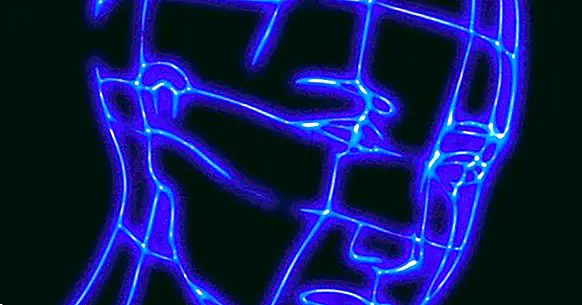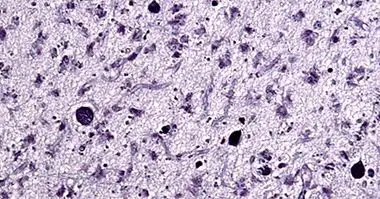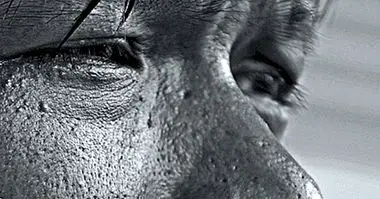Types of stroke (definition, symptoms, causes and severity)
To this day, the word stroke is not unknown to the majority of the population . Stroke or strokes are one of the leading causes of death in the world, being in our country the second leading cause of death and the first in women over 75 years of age in addition to the main cause of disability.
This phenomenon is due to an obstruction in the circulatory system in the brain, which causes death by asphyxia on the part of the brain. But not all strokes occur in the same way or for the same reasons. In order to better understand this phenomenon, in this article we will analyze the different types of strokes that exist.
Stroke or stroke
We understand stroke or stroke to the death or alteration of brain tissue produced by obstructions or ruptures of the blood vessels responsible for irrigating them. The effects of these phenomena will vary greatly depending on the area that is affected, being able to cause from death to the loss of abilities such as sight or movement of part of the body.
In general, the factors that lead to the emergence of stroke are silent (Special caution must be taken with hypertension and diabetes, as well as the use of tobacco and alcohol) and the person who suffers from it does not usually realize the possibility of suffering it.
In addition, a large part of the population does not know the main warning signs that could be warning of the existence of a stroke. There are three very relevant symptoms whose joint presence is usually linked to the suffering of a stroke: the existence of hemiparesis or sudden paralysis of one side of the face (it is common to see it in the smile), the existence of sudden speech alterations (speech uncoordinated, illogical, unintelligible or bizarre) and the weakness or hypotonia (even paralysis) of one or more extremities of a hemibody.
It is essential to go to medical services as quickly as possible, since early care will prevent or reduce the death of brain tissue. Even if it does not generate the death of the patient, it is likely that they generate some kind of disability (although in many cases the lost skills could recover).
Types of stroke
As we have said, not all strokes have the same characteristics, they occur in the same way or are due to the same causes. That is why we have different classifications regarding the types of stroke.
As usual, have been considered the existence of two large groups, within which we can find different typologies .
1. Hemorrhagic stroke
The hemorrhagic stroke or cerebral hemorrhage is that type of cerebrovascular accident that takes place before the rupture of one or several blood vessels, flooding the blood the brain tissue and causing its suffocation. And to this damage must be added the pressure that the accumulation of blood inside the skull can cause. Not only can they occur in the brain but also at the level of the meninges and inside the cerebral ventricles.
Different types of hemorrhagic strokes can be found, which can be caused in different circumstances.
1.1. Stroke due to traumatic brain injury
A traumatic brain injury can cause a stroke to appear in the form of cerebral hemorrhage , by breaking the blood vessels of the brain.
1.2. Stroke by aneurysm
Another frequent cause of cerebral hemorrhage is the presence of aneurysms , localized widening of the blood vessels that are generated due to the weakness of the blood vessels. These are blood-filled protrusions that, because they have a weakened wall, have a great ability to break under the pressure exerted by the blood flow.
1.3. Stroke due to AVM and other malformations
There are different disorders and syndromes of genetic origin that cause the blood vessels of the brain not to develop properly or present great fragility, as occurs in the arteriovenous malformation syndrome, with which it can be easy to break them .
2. Ischemic stroke
Also called cerebral infarction, ischemic stroke occurs when one of the arteries of the brain is obstructed, thereby interrupts the flow of blood to part of the brain . This generates that the brain tissue does not have the oxygen and nutrients necessary to survive, dying in a short time. In general, when we talk about stroke, we usually refer to those of this type, being the most frequent of the big types.
Within the ischemic strokes we can find several types.
2.1. Stroke due to cerebral embolism
In embolism, the element that causes the artery to be obstructed comes from outside the nervous system , traveled by blood to reach this system and cause ischemia if it is larger than the blood vessel through which it passes. It is usually a blood clot that breaks away from its place of origin.
2.2. Stroke due to cerebral thrombosis or atherothrombotic
In this type of ischemic stroke the blockage occurs within the blood vessels of the brain itself . It is usually common in people with arteriosclerosis.
2.3. Lacunar or small vessel stroke
Lacunar stroke is a subtype of ischemic stroke in which the obstructed blood vessel is an arteriole , part of the ramifications of the arteries that reach the different points of the brain. The amount of tissue that dies is usually small, but can also have serious effects depending on the area in which it occurs. It is also possible that no type of symptom is manifested, and the lesion can remain silent.
2.4. Transient ischemic attack
This type of ischemic stroke occurs when the plugging of one of the blood vessels occurs that irrigate a part of the brain, but the system itself is able to overcome it so that the symptoms occur in a short period of time that can last up to 24 hours.
However, although it is solved by itself, it is usually indicative of the possibility of developing a more severe and permanent stroke, and it is necessary for the affected person to carry out prevention strategies and control their health status. It would be similar to the relationship between an angina pectoris and a heart attack.
2.5. Hemodynamic stroke
It is a type of stroke in which there is a decrease in the blood pressure level which causes the blood to not reach with enough force to irrigate the entire brain correctly. Although there may not be an obstruction as such, it is considered within ischemic strokes.



















